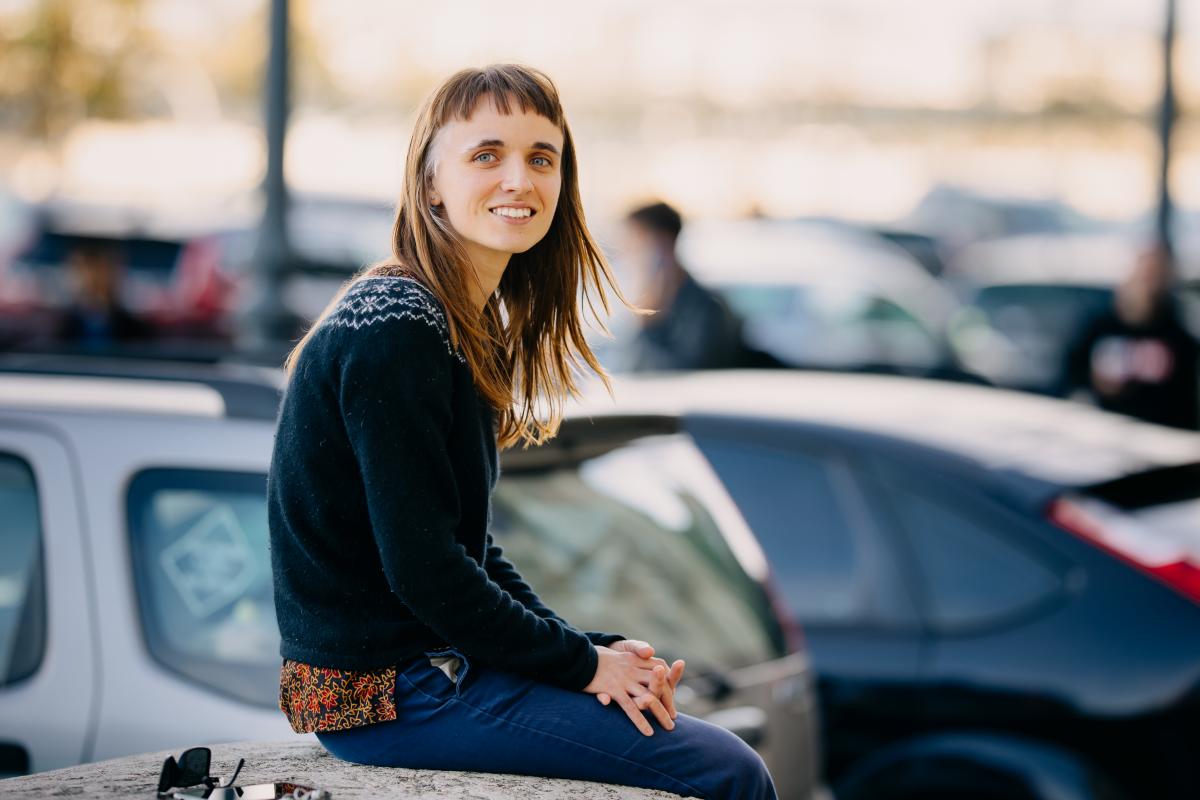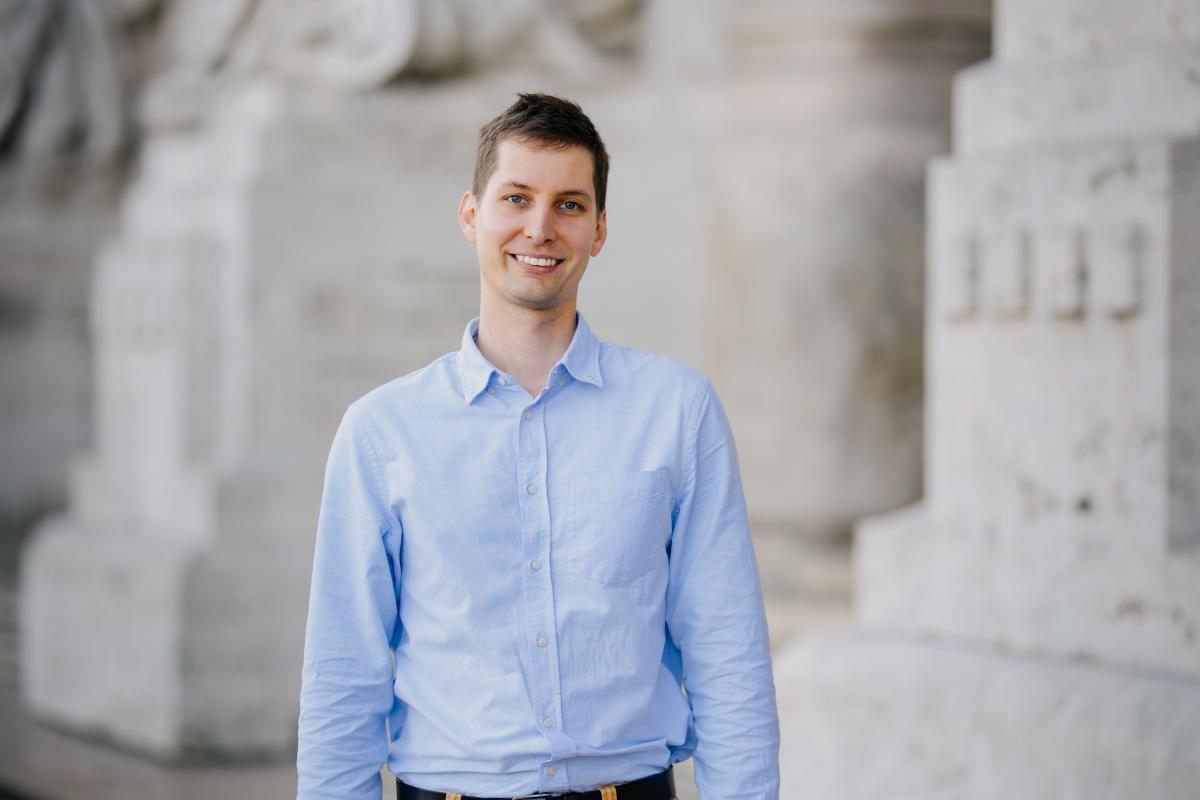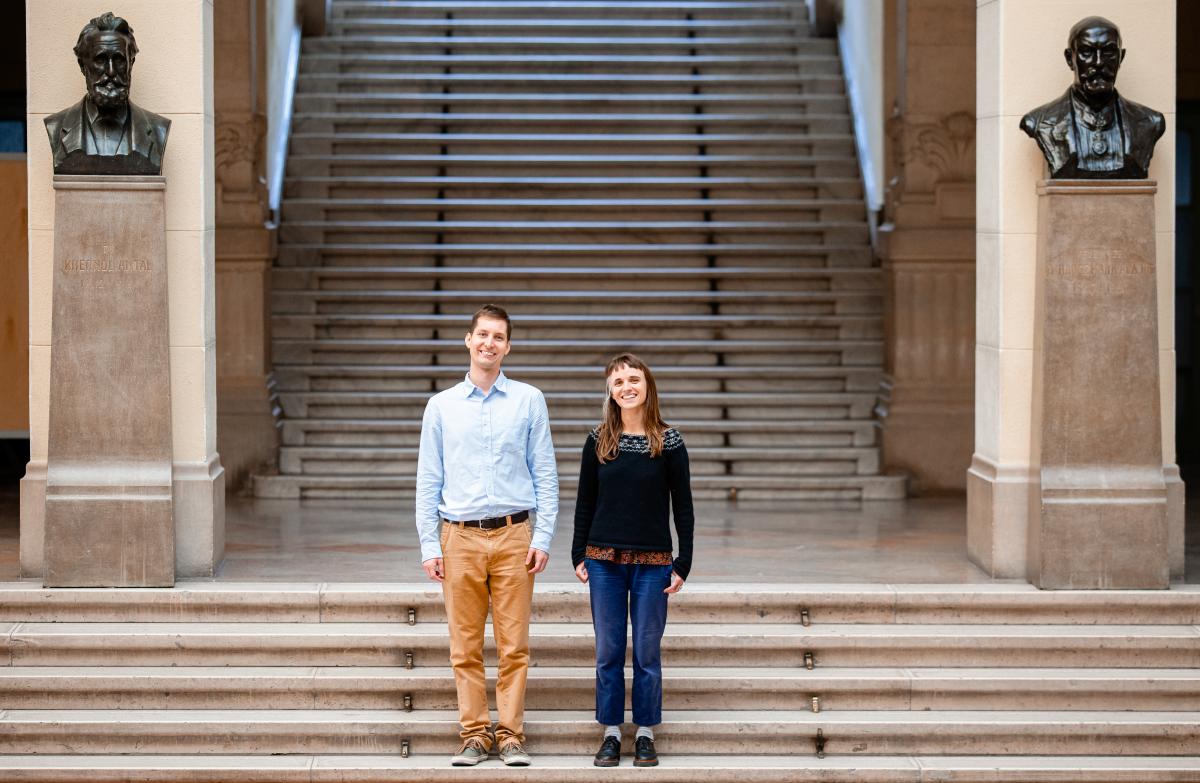News feed
The mathematical mastery of BME captivates Fulbright student visiting researcher
2023. 11. 30.Interviewed Kate Barnes, a Fulbright student researcher at BME, and her mentor Roland Molontay, head of HSDSLab at the Institute of Mathematics, Faculty of Natural Sciences.
Why did you decide to apply for a Fulbright Scholarship at Budapest University of Technology and Economics? Why did you choose Hungary and BME?
K.B.: The story started more than 3 years ago. I came to Hungarian in the spring of 2020 for a study abroad semester in Computer Science at AIT. I had heard of Hungary's strong reputation in math, and AIT was one of few programs for US undergraduates that offered both a chance to go abroad and rigorous coursework that could be counted towards your studies. My experience at AIT surpassed my expectations. The people I met here in Budapest were warm and welcoming, and the level of education was high. My favorite class was Data Science, taught by Dr. Roland Molontay. After this class ended, Dr. Molontay encouraged us to continue working on our final project for that class, and in January 2021 our results were published in the Journal of Applied Network Science.
R.M.: Absolutely, I was very proud of the team that executed such an exceptionally successful research project for my class. This achievement becomes even more remarkable when considering that it all unfolded during the challenging backdrop of the COVID-19 pandemic.
Can you tell us something about this research project?
K.B.: My teammates all shared a love of internet memes, which are humorous images with some text captions. We scraped a data set of memes from Reddit and performed exploratory analysis, describing the data set, with the goal of predicting which memes end up going viral on Reddit. For me, one of the most interesting results was the importance of low-level, not so human-interpretable features to the model's predictions -- things like the probability with which a neural net identified objects in the meme images and the average saturation component of the HSV image were very important to the models predictions.

So you first came to Hungary in the spring of 2020, just when the Covid hit. How did it affect your experience?
K.B.: Yes, as Dr. Molontay mentioned, that impacted our research as well, because the Reddit dataset we were working with was from the end of march, when Covid hit, so it was full of covid-related content and provided some insight into the worlds response to the pandemic. You’re right, I was here in Budapest at that time, and while most of my classmates at AIT left, my roommate and I stayed here. To us, it seemed more dangerous to go through the airports and make rapid decisions at a time when so little was known. At that point I also knew people in Budapest and felt safe here. It ended up being a very unique experience. I spend I lot of time reading in my windowsill, I remember I was reading Being and Time – a monster of a book, a good project for Covid. I found a bike delivery group to volunteer with, delivering masks, and went on walks in the beautiful city which felt like it had completely emptied of people overnight.
Why did you decide to come back to Hungary again on a Fulbright scholarship?
K.B.: Well, Budapest itself had definitely made an impact after 2020, I love the city and the language as well, but the main reason for coming back was my interest in Network Science. I had been exposed to a number of years back through exploring the research at the Santa Fe Institute. However, it's still not common to teach Network Science in many US institutions. My college didn't offer a class, so it wasn't until coming to AIT in 2020 that I got to take a class in the subject. There, I learned that Network Science and Graph Theory (the underlying math) have a long history in Hungary including big names like Pál Erdős and Albert-László Barabási. Of course, Dr. Molontay and I already knew each other, and we share this interest in Network Science, so joining his lab at BME was really the perfect fit.
How has your experience been?
K.B.: It's been amazing. I have met very warm people here and felt very welcomed. Professionally, I have grown more than I could have hoped for. I've had the opportunity to collaborate with researchers from different fields and from industry. Dr. Molontay invited me to TA for the Data Science class at AIT, where I teach the coding sessions. This has been a great opportunity to develop my teaching abilities. Dr. Molontay also supports my special interest in AI ethics and the Philosophy of technology, and he invited me to give lectures on this topic for his Data Science courses at AIT and BME. By the end of the last academic year, I started working on two additional research projects and was scheduled to present at a conference over the summer, so it made sense to extend my time here for an extra semester.
Do you also take classes at BME? How do the courses compare to the courses at home?
K.B Yes, I take 2-3 classes at BME per semester, do research, and have my teaching responsibilities. I've been very impressed by the math education in particular at BME. Hungary's reputation for strong mathematics does not disappoint. Previously, I had experienced math classes as quite wrote – you simply learn and apply formulas. Here, I find the teaching and the sorts of math problems provided are much more creative and relevant to real world applications.
Can you tell us about your current research?
K.B. When I first arrived, it made sense to pick off where we'd left off with our publication in 2021. Actually, predicting the popularity of memes had become a new research direction in Dr. Molontay's HSDSLab for his other students too. Our first project uses data from both the NYT and Reddit to analyze topical structures online and the impact of topicality on the popularity of internet content. In the spring, we started a Scienometrics project, in which we're analyzing journal citation networks with the goal of better quantifying the scientific impact of journals. Both of these projects were accepted to the upcoming Complex Networks conference in France in November which I’m very excited about. My third project is about the diffusion of innovation in social networks.
Roland, what does the arrival of a Fulbright visiting student researcher mean for your laboratory?
R. M.: In many respects, I am truly delighted to have Kate spend a year and a half with us at HSDSLab. Firstly, the fact that she returned to continue the research she initiated back in 2020 is a substantial affirmation in itself. It's equally gratifying that Kate's research proposal received recognition from a prestigious scholarship like the Fulbright. Her presence within our laboratory is of exceptional significance.
Kate not only excels at independent work but is also an outstanding team player. She collaborates with several of my students, providing them with valuable experience in working within an international environment and brainstorming in English. I believe that the entire laboratory has benefitted from this collaboration.
Of course, it's essential to note that we anticipate high-quality publications to emerge from Kate's research projects, and she also plays a significant role in assisting with my teaching endeavors. I have great confidence that our professional relationship with Kate will endure, fostering a long-term and mutually beneficial international connection.

Kate, what plans do you have for the future?
K.B.: I'm applying to grad schools and hope to stay in research. I also hope to keep the professional relationships I've made here in Hungary. Perhaps, I'll have the opportunity to come back, or Dr. Molontay or one of his students may have the chance to go to the US (maybe on a Fulbright) and continue our research collaborations.
R.M: Yes, that would be excellent! And there's a very good chance that it will happen!
Roland, in 2021, you already hosted a Fulbright Visiting Professor, Timothy O’Brien. Now you are hosting Kate. Why do you think that mobility programmes like Fulbright are important?
R.M: The visit by Professor Timothy O’Brien was a resounding success. He delivered two highly acclaimed courses on applied statistics, which were met with tremendous enthusiasm from our students. He proved to be not only an engaging instructor but also a truly inspiring figure.
Our connection with Timothy has endured; in fact, last year, I had the privilege of spending a semester in the United States, accompanied by my mentee, Marcell Nagy. During our time in the U.S., we were fortunate to meet up with Professor O’Brien and his wife in Chicago. It's worth noting that Marcell's visit to the U.S. was also made possible through the Fulbright Scholarship.
This story serves as a compelling illustration of the significant benefits provided by mobility programs: BME students had the opportunity to gain fresh insights from a prominent U.S. scholar, while in my lab, we established a valuable collaboration.
Kate, what advice do you have for others who might be interested in Fulbright?
K. B.I would definitely recommend the program. It is rare to get an opportunity, especially for students so early in their career like myself, to focus on a project of your choice, and develop yourself professionally outside of the confines of a degree program or particular job. The experience is what you make of it. Often Fulbright scholarships are very self-directed and benefit from having a specific, clearly defined project.

MR-KJ
Photo: Geberle B.
